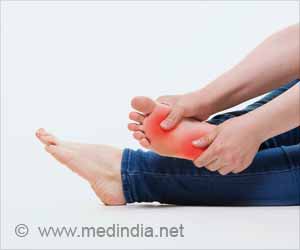A RAND Corporation study issued today says school playgrounds and athletic facilities can be important tools in the fight against childhood obesity, but many are locked and inaccessible to children on weekends – especially in poor and minority neighborhoods.
The study is a new analysis of data from a national research study called the Trial of Activity for Adolescent Girls. The data deals with the physical activity of 1,556 girls in the sixth grade in six metropolitan areas: Washington, D.C./Baltimore, Md.; Columbia, S.C.; Minneapolis, Minn.; New Orleans, La.; Tucson, Ariz.; and San Diego, Calif.Researchers visited all the schools and parks within a half-mile radius of the homes of the girls on Saturdays in the spring of 2003 for the original study. The 407 schools represented 44 percent of potential neighborhood sites for physical activity.
Researchers found that, on average, 66 percent of the schools were unlocked on weekends. But only 57 percent of schools were both unlocked and had accessible facilities for weekend physical activities such as playgrounds, athletic fields, basketball courts and paved playing surfaces.
“Girls who lived near locked schools tended to be heavier, and neighborhoods with locked schools were disproportionately poor and had larger minority populations,” said Molly M. Scott, lead author of the study and research analyst with RAND, a nonprofit research organization. “These neighborhoods, where risk of obesity is high and public parks and playgrounds are often lacking, could benefit from convenient and safe places for physical activity. And making schools accessible doesn't require construction. It's a policy change.”
Although the RAND Health study didn't find a relationship between school accessibility and increased weekend physical activity rates, the number of locked schools was associated with significantly higher body mass index for the girls. Body mass index, or BMI, is a mathematical formula representing weight relative to height that can be used to determine whether a person is overweight or underweight.
The study found differences in BMI and physical activity by the girls' race and socioeconomic status, consistent with the findings of previous studies. Hispanic and African-American girls had 7.2 percent and 7.8 percent higher BMIs respectively than whites, and non-white girls recorded less physical activity than their white counterparts. “Studies consistently find that people of different races have different BMIs, but the policy implications of that are often unclear,” Scott said. “This study identifies locked schools as great points of policy intervention where gains in the fight against obesity could potentially be made.”
Advertisement
Researchers measured the girls' physical activity with accelerometers – devices that measure intensity of movement. Since middle school girls aren't old enough to drive, the RAND study looked at locations within a half-mile of the girls' homes — a distance they might be expected to walk or ride their bikes. Researchers also examined data on the girls' weekend activity levels.
Advertisement
Public schools had the highest average number of active amenities and a significantly higher proportion of baseball fields, paved playing surfaces, basketball and handball courts and high-level gymnastics equipment.
Source-Generef
SRM/B










